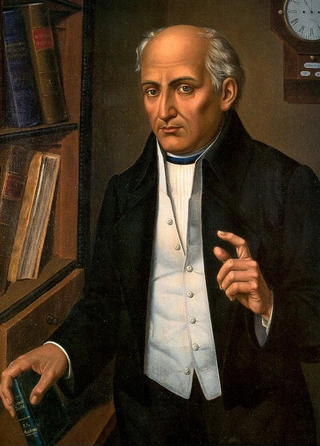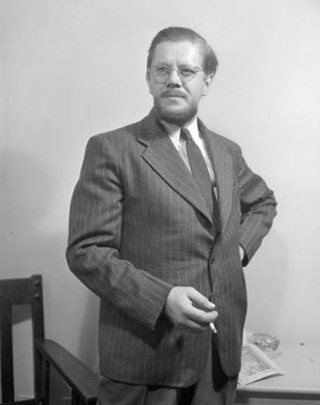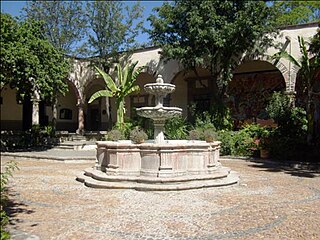Related Research Articles

Diego María de la Concepción Juan Nepomuceno Estanislao de la Rivera y Barrientos Acosta y Rodríguez, known as Diego Rivera, was a prominent Mexican painter. His large frescoes helped establish the mural movement in Mexican and international art.

Don Miguel Gregorio Antonio Ignacio Hidalgo y Costilla y Gallaga Mandarte Villaseñor , more commonly known as Miguel Hidalgo y Costilla or Miguel Hidalgo, was a Catholic priest, leader of the Mexican War of Independence and recognized as the Father of the Nation.

David Alfaro Siqueiros was a Mexican social realist painter, best known for his large public murals using the latest in equipment, materials and technique. Along with Diego Rivera and José Clemente Orozco, he was one of the most famous of the "Mexican muralists". He was a member of the Mexican Communist Party, and a Stalinist and supporter of the Soviet Union who led an unsuccessful attempt to assassinate Leon Trotsky in May 1940.

Tula de Allende is a town and one of the 84 municipalities of Hidalgo in central-eastern Mexico. The municipality covers an area of 305.8 km2 (118.07 sq mi), and as of 2010, the municipality had a total population of 103,919. The municipality includes numerous smaller outlying towns, the largest of which are El Llano, San Marcos, and San Miguel Vindho. It is a regional economic center and one of Mexico's fastest growing cities. However, it is best known as the home of the Tula archeological site, noted for its Atlantean figures. Its built-up area made up of Atotonilco de Tula, Atitalaquia, Tlaxcoapan municipalities was home to 188,659 inhabitants at the 2010 census.

Guanajuato, officially the Free and Sovereign State of Guanajuato, is one of the 32 states that make up the Federal Entities of Mexico. It is divided into 46 municipalities and its capital city is Guanajuato.

San Miguel de Allende is the principal city in the municipality of San Miguel de Allende, located in the far eastern part of Guanajuato, Mexico. A part of the Bajío region, the city lies 274 km (170 mi) from Mexico City, 86 km (53 mi) from Querétaro, and 97 km (60 mi) from the state capital of Guanajuato. The city's name derives from two persons: 16th-century friar Juan de San Miguel, and a martyr of Mexican Independence, Ignacio Allende, who was born in a house facing the city's central plaza. San Miguel de Allende was also a critical epicenter during the historic Chichimeca War (1540–1590) where the Chichimeca Confederation defeated the Spanish Empire in the initial colonization war. Today, an old section of the town is part of a proclaimed World Heritage Site, attracting thousands of tourists and new residents from abroad every year.

Miguel Covarrubias, also known as José Miguel Covarrubias Duclaud was a Mexican painter, caricaturist, illustrator, ethnologist and art historian. Along with his American colleague Matthew W. Stirling, he was the co-discoverer of the Olmec civilization.
Leonard Brooks was a Canadian artist.

Ronald York Wilson, also known as R. York Wilson, was a Canadian painter and muralist.
Martin Wong was a Chinese-American painter of the late 20th century. His work has been described as a meticulous blend of social realism and visionary art styles. Wong's paintings often explored multiple ethnic and racial identities, exhibited cross-cultural elements, demonstrated multilingualism, and celebrated his queer sexuality.
Antonio M. Ruíz, was a Mexican fine art painter and scenic designer otherwise known by his childhood nickname "El Corzo" or "El Corcito" (diminutive) which came about due to his resemblance to a popular Spanish bullfighter or torero.
Luis Gutierrez is an American artist based in Los Gatos, California, USA.
Antonio Rodríguez Luna was a Spanish painter who developed most of his career while in exile in Mexico during the Spanish Civil War. He began his career young, while still studying in Madrid and before the war had already exhibited in various places in Europe. His opposition to Francisco Franco, forced him into exile, with intellectuals and artists in the country arranging his asylum. His career here included a Guggenheim Fellowship with major exhibitions in Washington DC and New York along with exhibitions at the Museo de Arte Moderno and the Palacio de Bellas Artes in Mexico. Despite his success, he never forgot his Spanish roots, with an exhibition in Madrid in 1971 and a return to his hometown of Montoro in 1981, after the death of Franco.

Reva Brooks was a Canadian photographer who did much of her work in and around San Miguel de Allende in Mexico. The San Francisco Museum of Art chose Reva Brooks as one of the top 50 women photographers in history.

Allende Municipality is a municipality located in the northeastern Mexican state of Nuevo León. It comprises a region known as Región Citrícola, for being a major producer of orange at local, national and even international level. Allende is located at the Sierra Madre Oriental range foothills in the central-southeastern part in the state of Nuevo León. It has a territorial extension of 148.5 km², comprising around 0.22% of the whole extension of Nuevo León. Given its geographic location, the region consists of valleys and hills ranging from 300 meters above sea level on the northeast, to 1,640 meters above sea level in the southwestern part of the municipality. According to the last census data in 2010, it has 32,581 inhabitants, of whom 16,436 are men and 16,145 are women. The main economic activities are agriculture, livestock, beekeeping, poultry and transportation, activities that generate many jobs in the region. A sister city of Allende is Conroe, Texas.
Jesús Nicolás Cuéllar was a Mexican painter who was best known for his surreal and magically themed work as well as his mentorship of the artistic community in his hometown of San Miguel de Allende. Some of his early work was noticed by Diego Rivera, who declared that the artist would be “a monster of painting.” Although he studied and exhibited abroad and his works can be found in collections in various parts of the world, Cuéllar dedicated most of his career in his studio in San Miguel de Allende.
Joseph F. Hlavacek was an American painter from Whitewater, Wisconsin whose paintings, mixed oil and metal collages, drawings, and prints on themes of the natural world won him much acclaim in the Midwest and from art critics around the country. He was also recognized as a potter and draftsman.

Howard Edwin Hack was an American representational painter and graphic artist, with works in numerous museum collections. Known for an innovative approach to a variety of media, as well as use of traditional oil paints, Hack began working in the late 1940s. He was active in the San Francisco Bay Area.

The Instituto Allende is a visual arts school in San Miguel de Allende, Mexico. The institute provides a range of courses, and offers a BA in Visual Arts and an MA in Fine arts in association with the Universidad de Guanajuato. Its courses and degrees are recognized by most North American universities. It has been popular with American and Canadian students and artists since it opened in 1950, and the town now has a large expatriate community from the USA and Canada.

Felipe Cossío del Pomar was a Peruvian painter and left-wing political activist. While in exile from Peru he founded an art school in San Miguel de Allende in Mexico in 1938. The school failed, but on his return in 1950 he founded the Instituto Allende, a university-level arts school that was still active in 2014. The short film "Felipe Cossio del Pomar in San Miguel de Allende", by Ezequiel Morones is in Youtube.
References
- ↑ "Ronald Mallory | MoMA". The Museum of Modern Art. Retrieved 2019-05-22.
- ↑ Ronald Mallory (1932 - 2021 ) . Askart.com, retrieved February 20, 2011